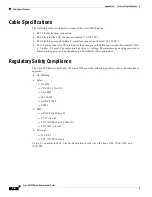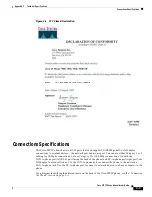
Glossary
GL-4
Cisco SIP IP Phone Administrator Guide
S
SIP
Session Initiation Protocol. This is a protocol developed by the IETF MMUSIC Working Group as an
alternative to H.323. SIP features are compliant with IETF RFC 2543, published in March 1999.
SIP equips platforms to signal the setup of voice and multimedia calls over IP networks.
SPI
Service provider interface.
T
TDM
Time-division multiplexing. Technique in which information from multiple channels can be allocated
bandwidth on a single wire, based on preassigned time slots. Bandwidth is allocated to each channel
regardless of whether the station has data to transmit.
U
user agent
See
UAS
.
UAC
User agent client. A user agent client is a client application that initiates the SIP request.
UAS
User agent server (or user agent). A user agent server is a server application that contacts the user when
a SIP request is received, then returns a response on behalf of the user. The response accepts, rejects,
or redirects the request.
V
VoIP
Voice over IP. The ability to carry normal telephone-style voice over an IP-based Internet with
POTs-like functionality, reliability, and voice quality. VoIP is a blanket term, that generally refers to
the Cisco standards-based (for example H.323) approach to IP voice traffic.











































